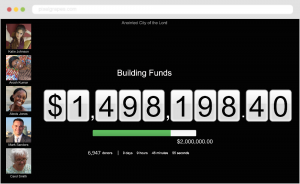How to Transition from the Offering Plate to Mobile Giving
So you’re ready to try mobile giving at your place of worship, but you’re concerned that you will get resistance from your parishioners. What can you do to make the transition as smooth as possible? The following tips will help you roll out mobile giving, without ruffling any feathers in the process.
Set a Good Example
Have the leaders and staff members in your church use mobile giving themselves so they become the experts. Elected and appointed leaders are trusted in faith-based organizations. Your congregation will be more likely to get on board if they hear about it from a trusted source: your leadership.
Once your team sees the value of mobile giving firsthand, they can better speak about it to parishioners — and people will have less reservations about giving it a try themselves.
Teach Mobile Giving to Your Members
I grew up in rural Kentucky, with approximately 90 people in my high school graduating class. So I know firsthand how people in small communities can often be set in their ways – especially when it comes to traditions. And that isn’t limited to just country churches. No matter where your place of worship is located, some members of your congregation will need an extra push to change their giving behavior.
Your best bet at getting these types of parishioners on board with mobile giving is to make an effort to teach them. I always say that the best way to do that is to get the youth group involved. The older folks can talk to the youth about the importance of giving, and the young members of your church can educate their elders about mobile technology.
By promoting inter-generational communication, you can not only encourage more people to get on board with mobile giving, but you can build a stronger sense of community as well.
Enhance Special Offerings
One great way to introduce new technology to your congregation is to use it for a special offering first. With mobile giving, particularly with the Givelify app, you have access to features that can really enhance these offerings. By using the Givelithon feature, for example, you can show real-time totals as people use the app to make donations toward a listed goal.
Raise funds for something the organization is truly passionate about, such as emergency relief, a youth mission project or trip, or paying off the last three months of a mortgage or loan. While your parishioners are excited about supporting an important cause, they will be more open to using new technology, “just this once.” Plus, even people who aren’t present can give; all they need is internet access from their smartphones, whether they are at home with a sick child or strolling the Great Wall of China.
In the process of using mobile giving for this offering, they will learn firsthand how easy and convenient it really is — and next time you call for a regular offering, you will see many of these supposedly “one time” mobile donors pull out their phones to give.
Don’t Force It
Not everyone will use mobile giving, even for special offerings. Some people simply won’t be comfortable doing so, especially when it’s first rolled out. That’s okay. It’s just another option. Members who want to keep writing checks can continue to do so. But for people who don’t have a checkbook and want to use their phone, you’ll be giving them the option.
According to the Center for Faith and Giving of the Christian Church (Disciples of Christ), encouraging multiple ways to give increases giving across the board. Adding one more giving option won’t hurt — it can only help. You may be surprised by how many people who were initially hesitant end up becoming mobile giving’s biggest advocates.



